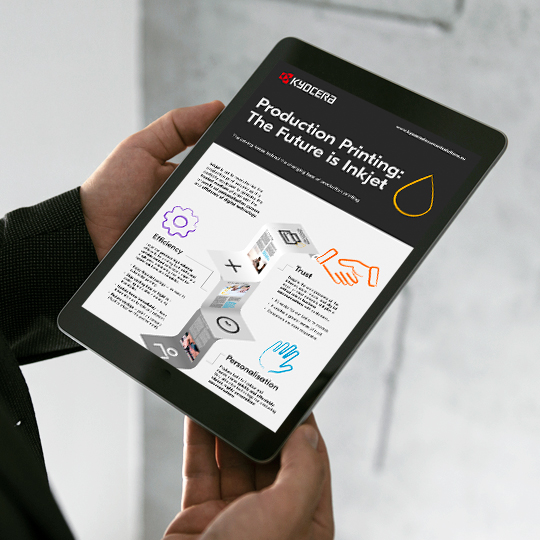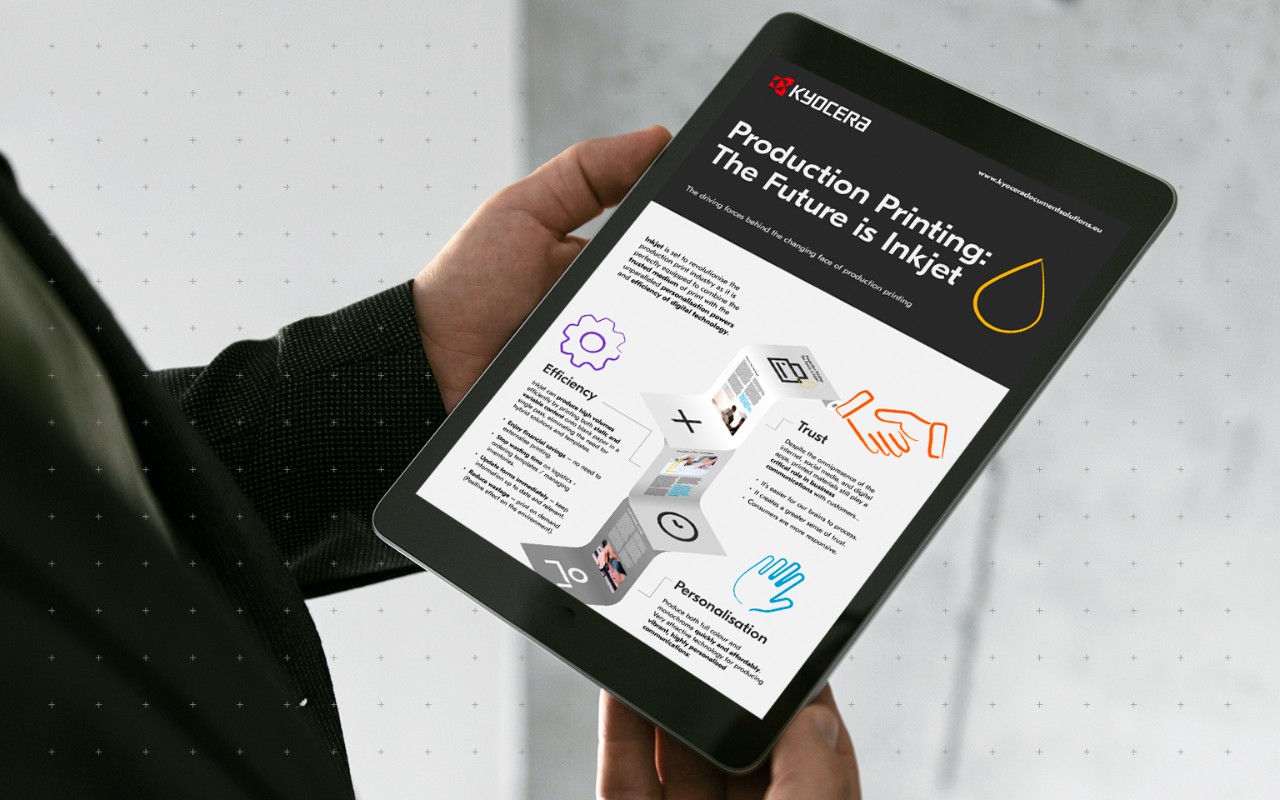The production print industry is experiencing a revolution. Inkjet technology has evolved the ability to produce high volumes at incredible speeds, making digital printing more competitive than ever. Rather than outsourcing to an external services provider, or splashing out huge sums on other makeshift alternatives, companies can now produce high-volume print jobs on site. Paper still has much to give; research shows that it continues to enjoy a great deal of authority in a range of sectors, including healthcare, finance and education.
Printed materials still represent a key component of corporate communications channels. Despite the obvious importance of digital communications, such as social networks and email, paper continues to make a bigger impact. This is because a physical document is considered more trustworthy. It’s easier for us to read and remember than information that appears on a screen. We can highlight or circle the bits we care about most, and we can hold onto it to show other people of file it away for safekeeping.
The power of inkjet resides in its ability to combine our respect for paper with efficient printing. A single inkjet device removes the need for hybrid solutions or outsourcing contracts, allowing companies to take back control of their printing operations. This helps reduce time wasting, by eliminating the need for complicated logistics involving templates or resources for several different machines. Another advantage of digital is speed. Offset devices have so many moving parts that setting them up can be a nightmare, whereas inkjet is ready to print almost instantly, boosting uptime and productivity.
The Future is Inkjet.
Another advantage of digital printers over offset presses is their ability to personalise output. Inkjet devices are therefore able to produce high volumes of vibrant, highly customised content, which is incredibly useful for providing a great customer experience. Every single sheet can be given a personal touch, by including the customer’s name or by using consumption data to offer targeted discounts in some cases. This helps companies to boost engagement rates and build strong relationships with customers, which is essential to achieve a decent return on investment.
In a nutshell, inkjet provides companies with an easy way to combine the trusted medium of print with the efficiency, speed and personalisation powers of digital technology. Across a range of industries, users now have the opportnuity to scale up their on-site printing capacities to produce highly engaging content in an efficient and affordable manner.

Download the infographic
Get more information about how and why the production printing industry is changing.
Opportunities in the world of production printing
Innovation in the industry is aimed at improving performance and sustainability, areas that Kyocera specialises in.




